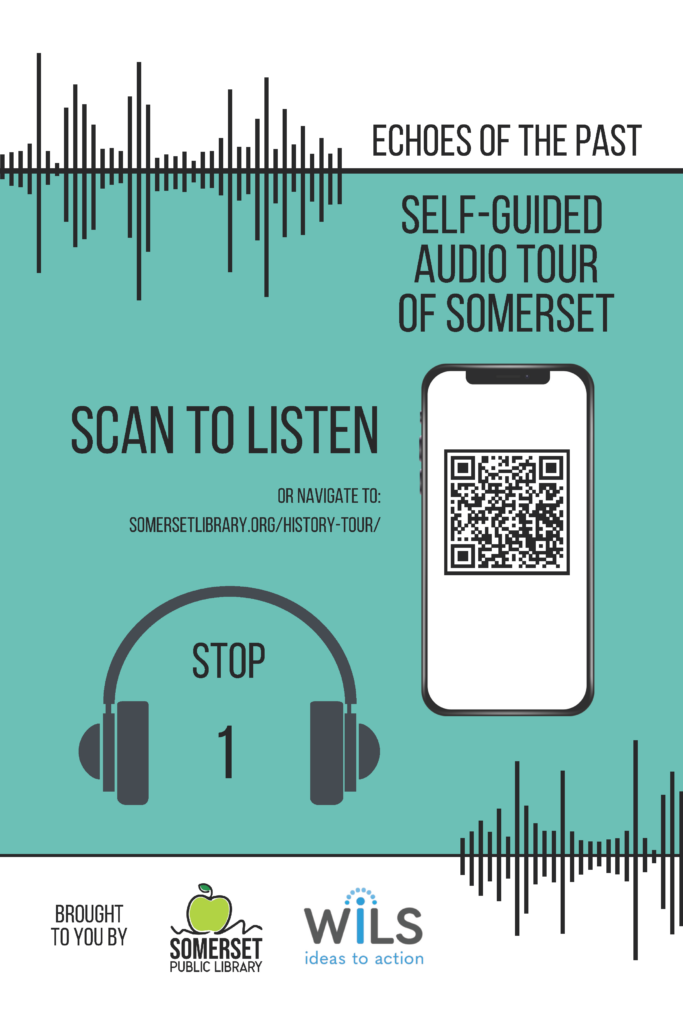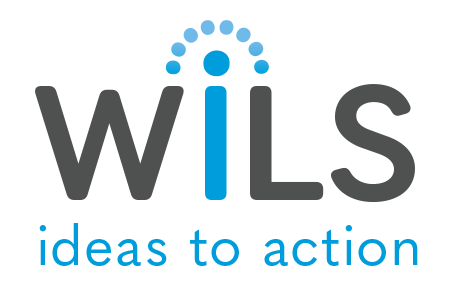By Renee Reckner, Circulation Librarian and History Room Archivist
Our library houses an extensive collection of carefully curated historical materials, including newspaper clippings, genealogy records, and photographs. However, despite our dedicated efforts, accessibility to these records is a challenge—researching historical records takes time, requires specific knowledge, and depends on library hours.
With the support of the WiLS Ideas to Action grant, the collaboration of community members, and some in-library knowledge, we set out to bridge this gap. Our goal is to bring these valuable historical materials out of the archives and into the hands of the people who need them, making local history more accessible to all.
 Through our own participation in walking tours, we’ve seen how they can be a fun and accessible way to connect with a community’s history. However, with the library’s limited staffing, we needed to incorporate technology to serve as the guide, ensuring the tours remain accessible without requiring staff-led facilitation.
Through our own participation in walking tours, we’ve seen how they can be a fun and accessible way to connect with a community’s history. However, with the library’s limited staffing, we needed to incorporate technology to serve as the guide, ensuring the tours remain accessible without requiring staff-led facilitation.
Our solution is to create bite-sized audio recordings featuring local voices sharing stories of Somerset’s past, paired with historical facts and photos from our archives. To make these resources easily accessible, we are developing a webpage where people can explore the stories and installing signs at historic locations with instructions on how to access the recordings.
We have not yet released the stories, as we are still in the process of editing and developing marketing materials. However, we are being intentional about making the tour accessible to a broad audience. While we hope teachers will bring students and families who are new to the community will engage with the stories, we are also mindful of older adults who may wish to reminisce about the past. To ensure inclusivity, transcripts will be available for those with hearing impairments, and the tour route has been designed to accommodate participants of all mobility levels. Additionally, the tour can be completed at one’s own pace—visitors can listen to a single story or explore all eleven.
Initially, we planned to use an app that would play audio recordings at GPS-coordinated locations. However, after researching our options, we discovered that the app required a high annual subscription fee. Given our goal of making this project sustainable for years to come, we were hesitant to rely entirely on a third-party platform.
To overcome this challenge, we turned to resources already available through the library. We leveraged our website, QR code technology, existing oral histories, recording equipment, and design services offered through our library system. This approach ensures long-term accessibility and sustainability while keeping costs manageable.
To determine the stories and locations for the tour, we engaged three community groups to identify the sites they felt were most significant. From there, we reached out to local business and property owners at these locations to share our vision for the tour and request permission to place signs on their properties.
To our delight, every business and landowner we approached was eager to participate. Their enthusiasm not only helped bring the project to life but also strengthened our connections within the community, fostering new partnerships with local businesses.



